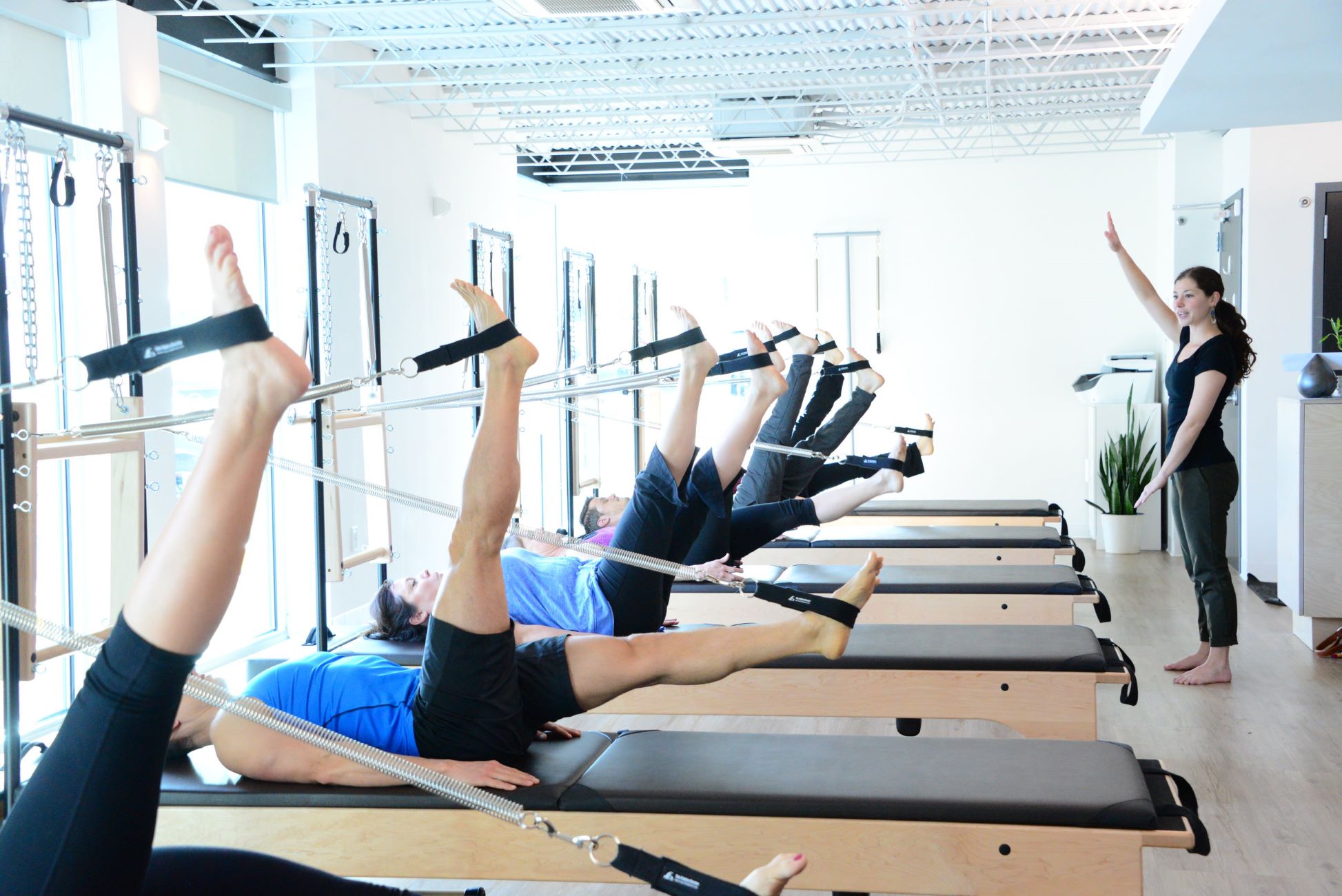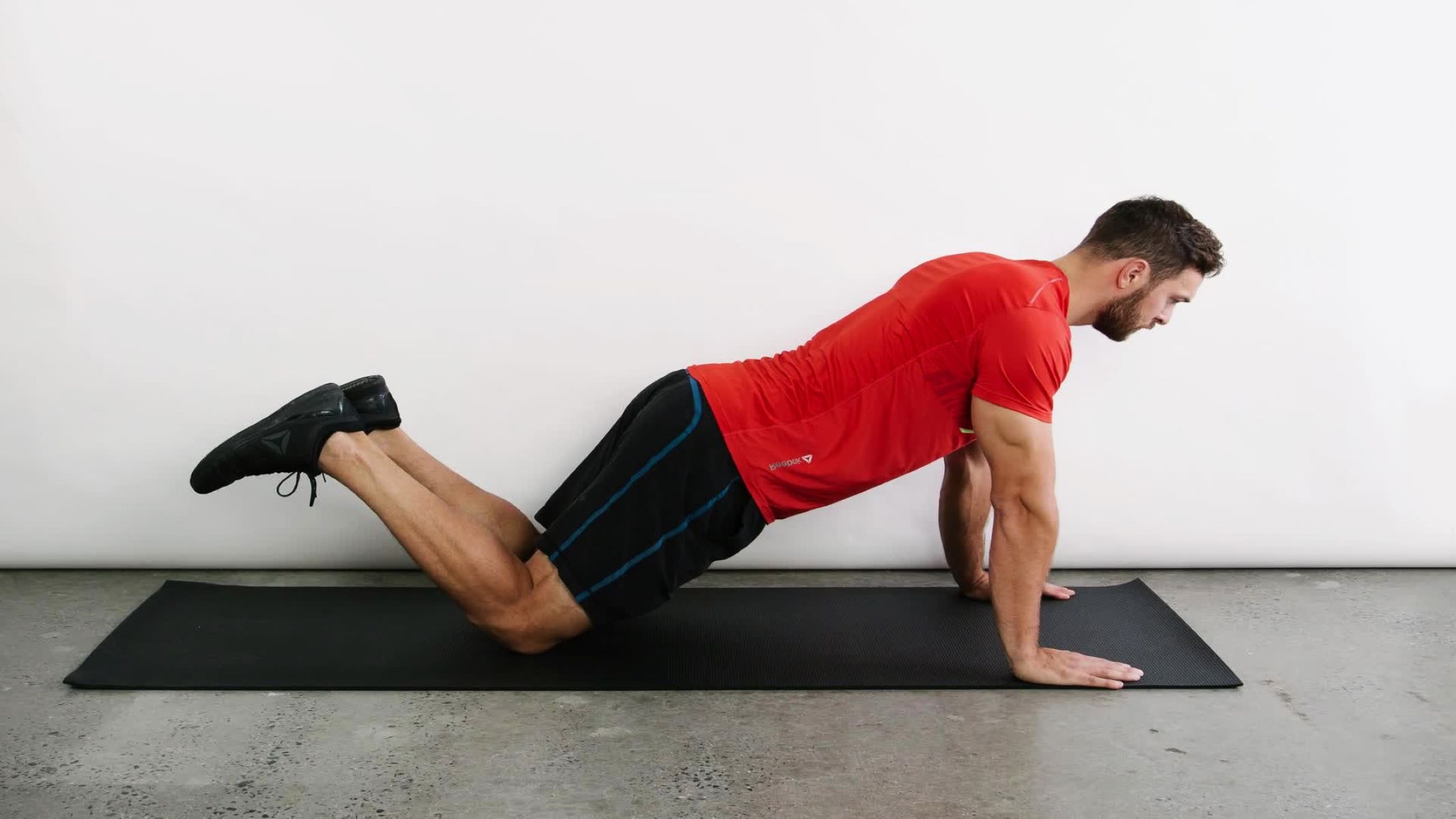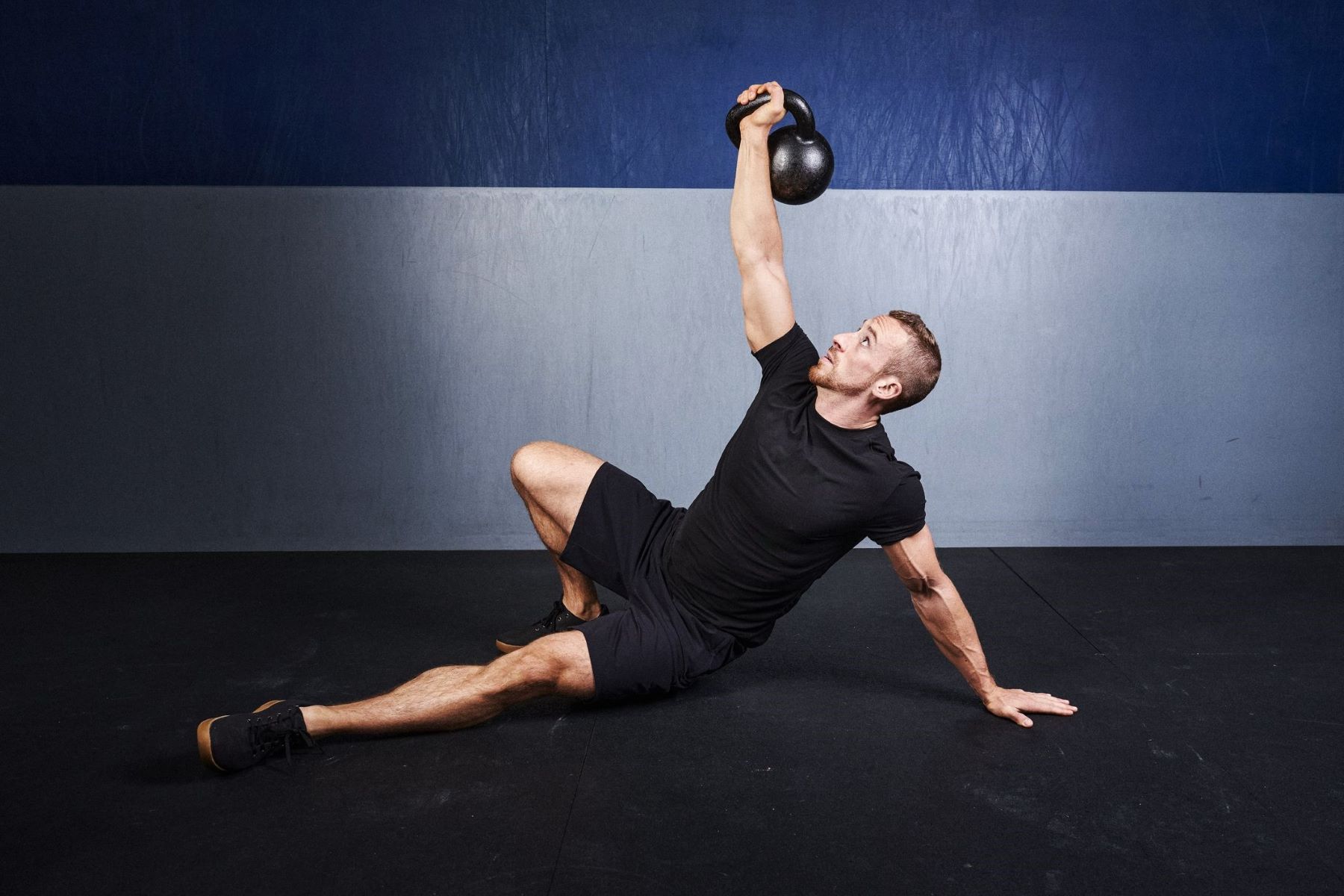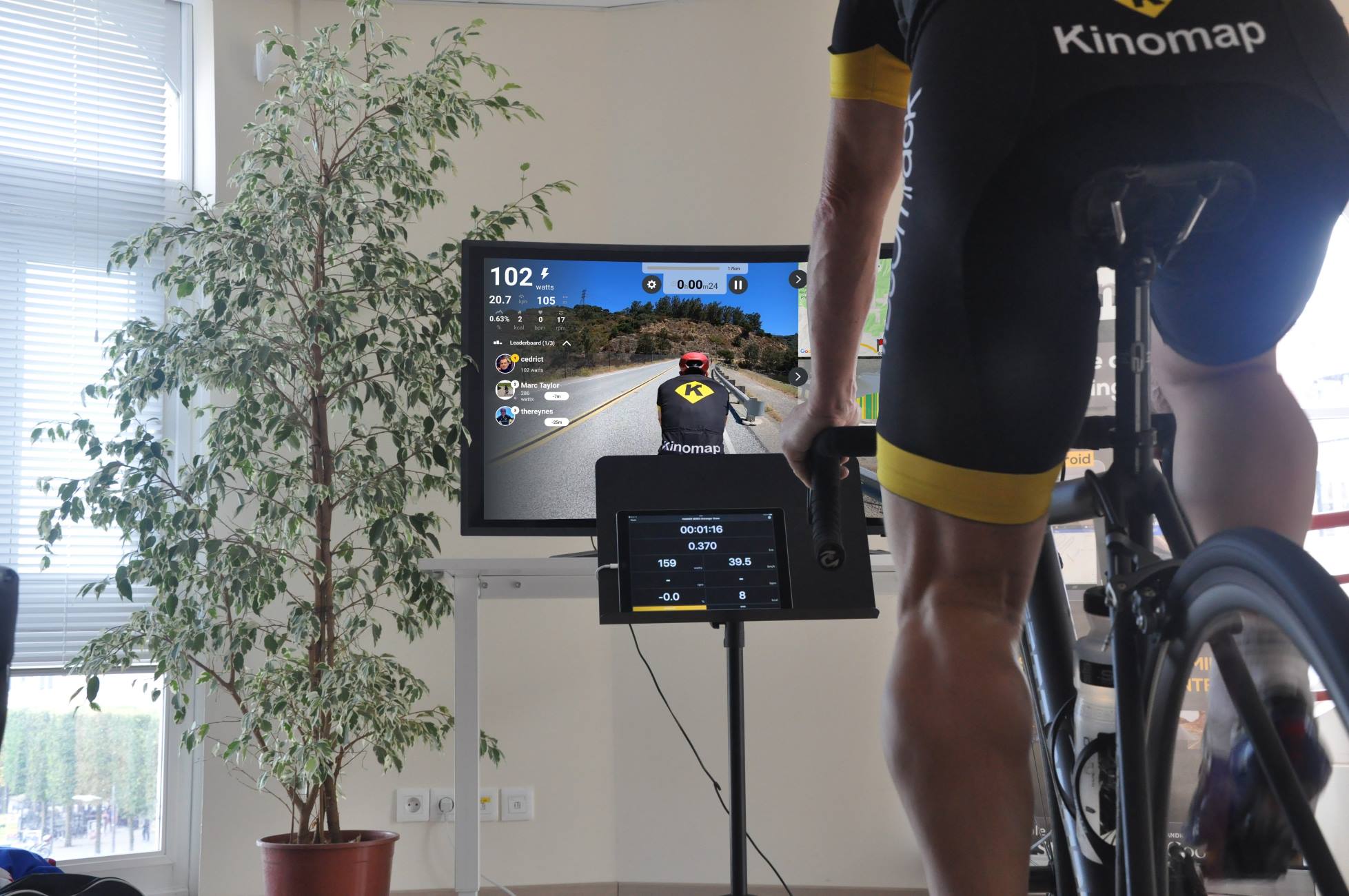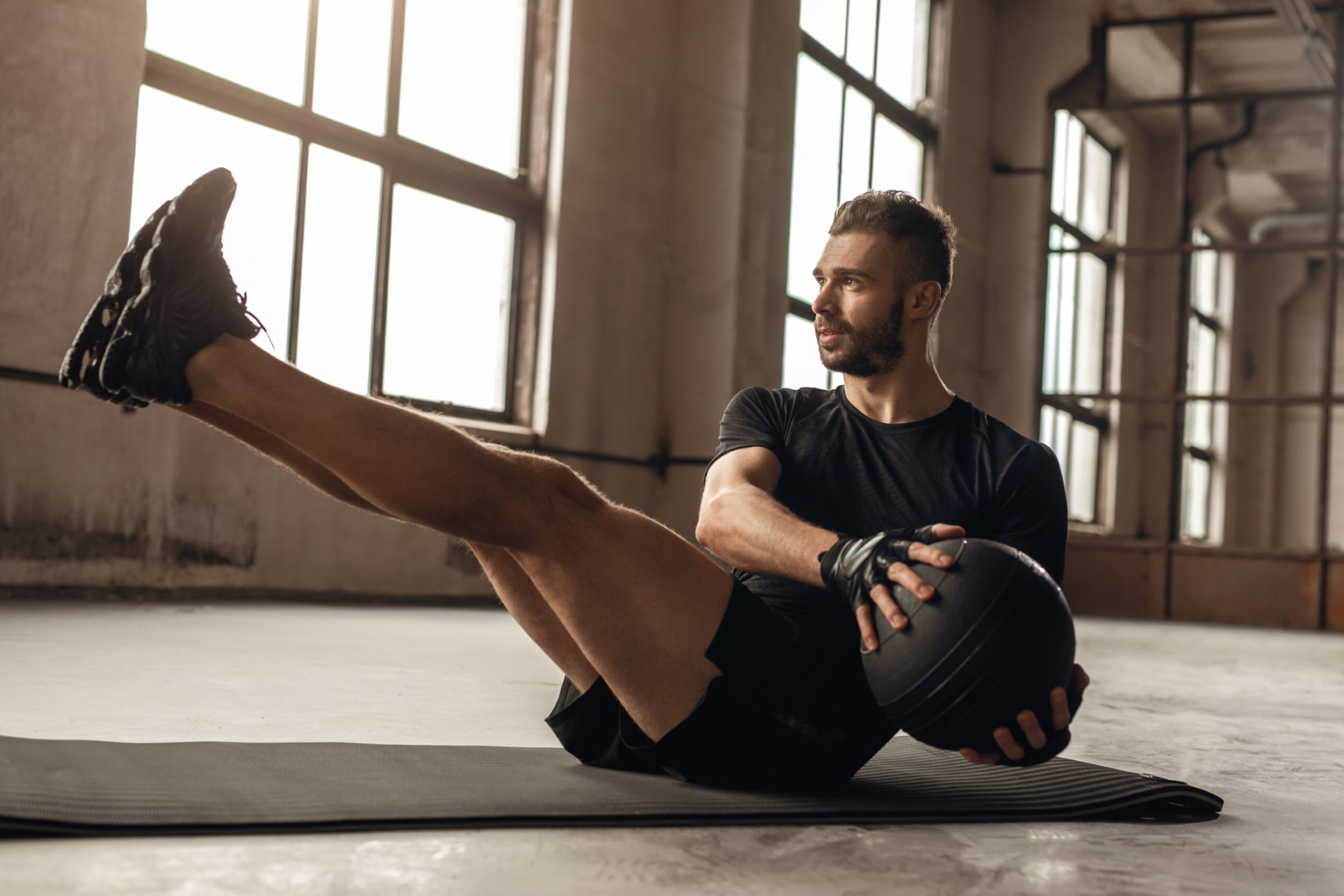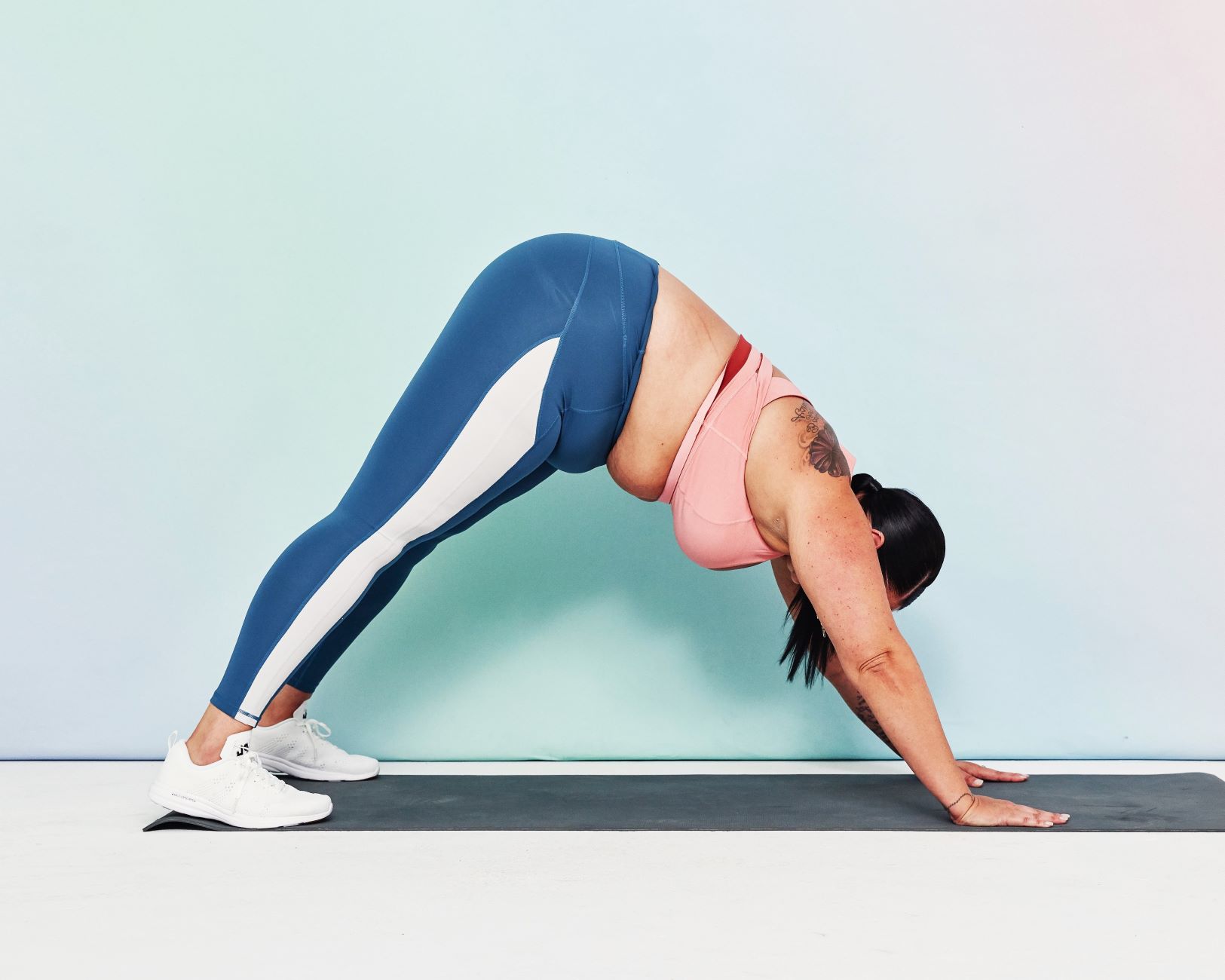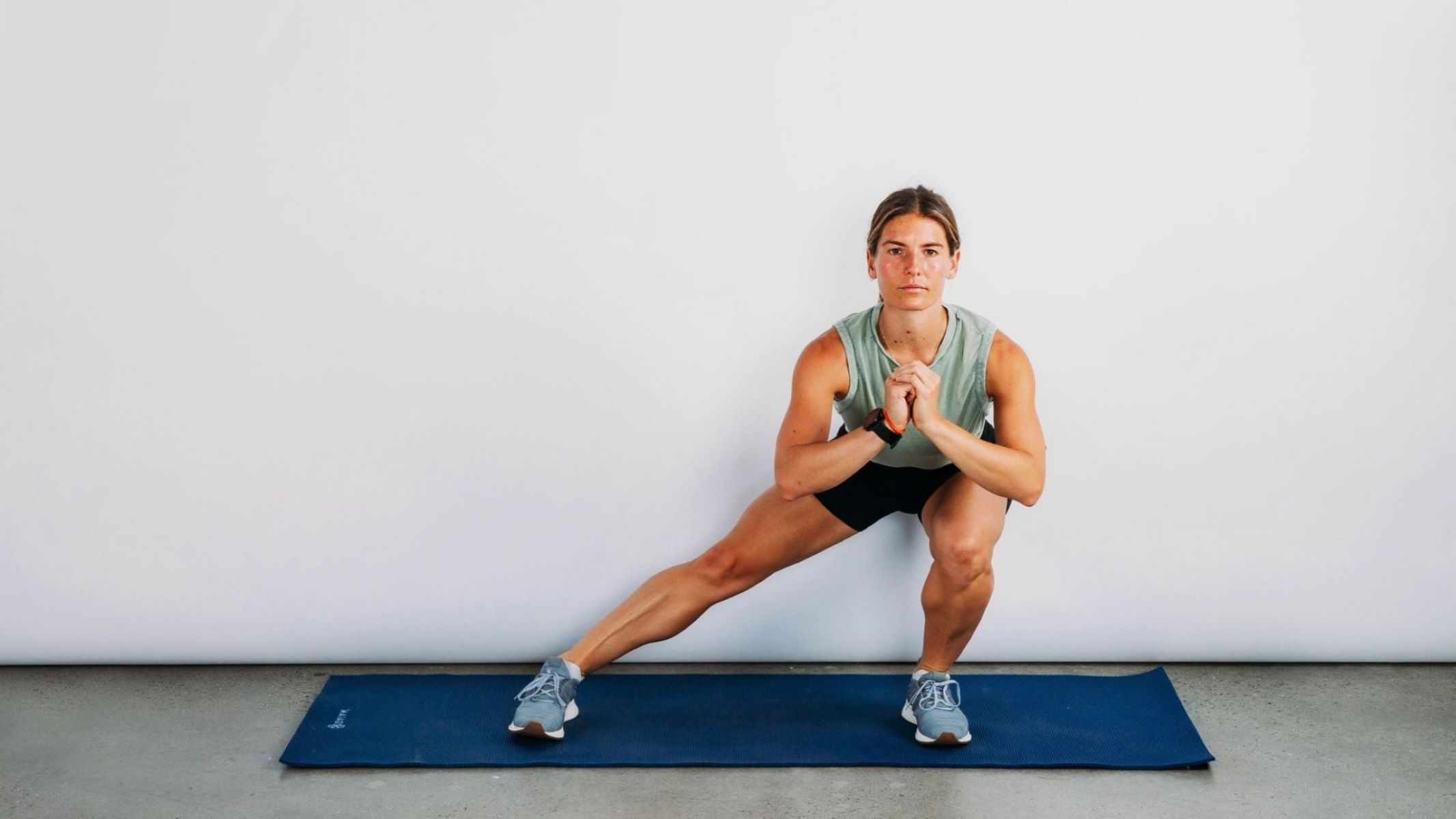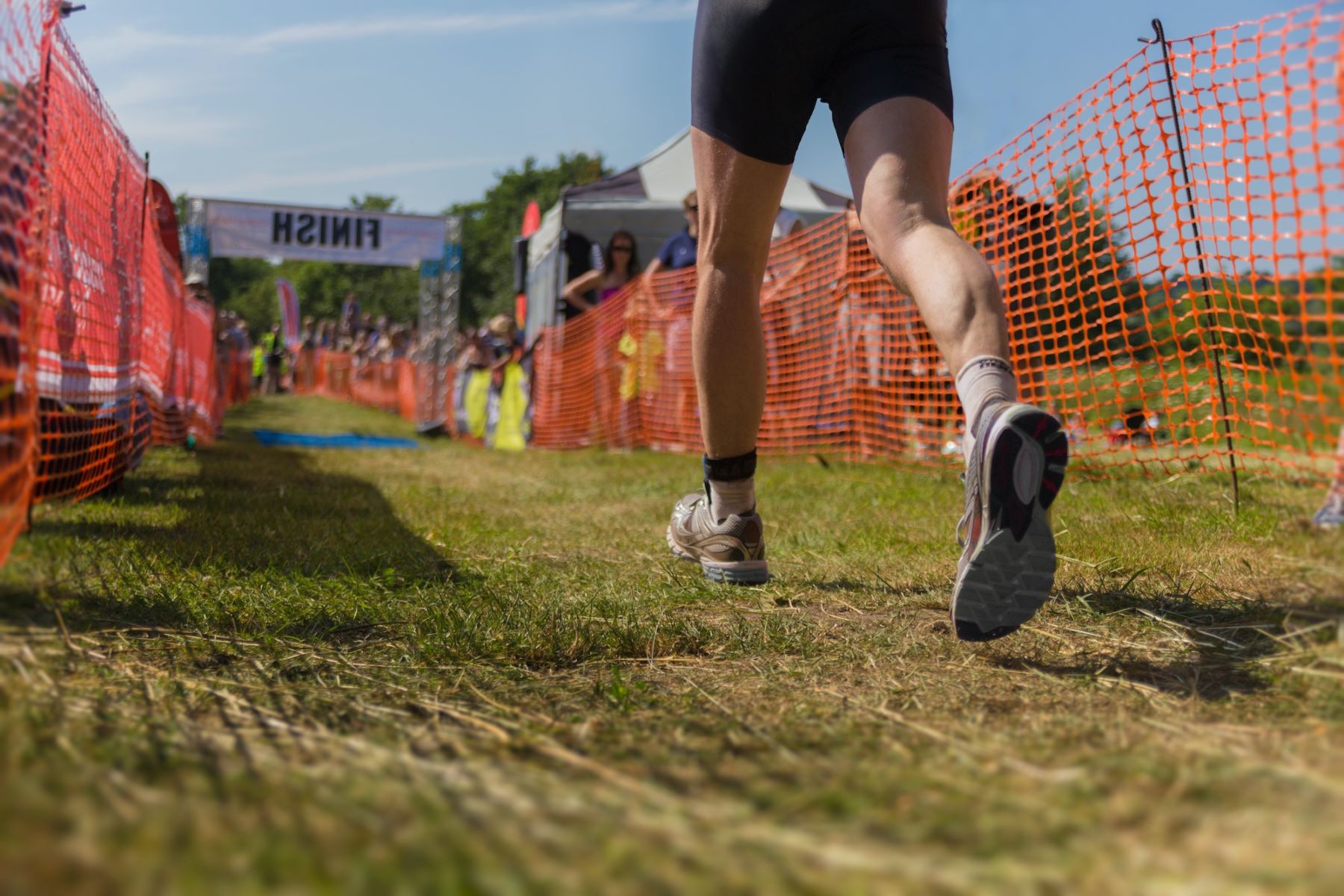Home>Training & Techniques>Cross-Training>The Benefits And Techniques Of Bicycle Crunches For Runners


Cross-Training
The Benefits And Techniques Of Bicycle Crunches For Runners
Published: February 20, 2024
Discover the benefits of bicycle crunches for runners and learn effective cross-training techniques to improve your performance and endurance.
(Many of the links in this article redirect to a specific reviewed product. Your purchase of these products through affiliate links helps to generate commission for Therunningadvisor.com, at no extra cost. Learn more)
Table of Contents
Introduction
As a runner, you understand the importance of maintaining a strong and resilient body to conquer the challenges of the track or trail. While running primarily engages the lower body, it's crucial not to overlook the significance of a strong core in optimizing performance and preventing injuries. One highly effective exercise that can significantly benefit runners is the bicycle crunch. This dynamic movement not only targets the core muscles but also engages the entire body, making it a valuable addition to any runner's training regimen.
In this article, we will delve into the world of bicycle crunches, exploring their numerous benefits for runners and providing a comprehensive guide on the proper technique for performing them. Additionally, we will discuss how to seamlessly incorporate bicycle crunches into your running routine and offer valuable tips to maximize their effectiveness.
By the end of this article, you will have a thorough understanding of how bicycle crunches can elevate your running performance and contribute to your overall fitness. So, lace up your shoes and get ready to discover the transformative power of this simple yet potent exercise.
The Importance of Core Strength for Runners
A runner's core serves as the powerhouse that drives every stride, providing stability, balance, and strength essential for optimal performance. The core encompasses a complex network of muscles, including the rectus abdominis, obliques, transverse abdominis, and lower back muscles, all of which play a pivotal role in maintaining proper posture and transferring force efficiently during running.
Core strength is the cornerstone of a runner's stability and endurance. When the core muscles are weak, the body is more susceptible to fatigue, leading to compromised running form and an increased risk of injuries. By contrast, a strong and stable core enables runners to maintain proper alignment, reducing the strain on the lower body and enhancing overall running efficiency.
Furthermore, a robust core contributes to improved balance and coordination, crucial elements for navigating uneven terrain and executing quick, agile movements. This is particularly beneficial for trail runners who encounter varying surfaces and elevation changes during their runs.
In addition to enhancing performance, a strong core plays a vital role in injury prevention. It acts as a natural shock absorber, effectively dissipating the impact forces generated with each footstrike. By minimizing the strain on the lower body, a strong core can help mitigate the risk of common running-related injuries, such as IT band syndrome, shin splints, and lower back pain.
Moreover, a well-developed core promotes better posture, which is essential for maintaining proper spinal alignment and reducing the likelihood of overuse injuries. By supporting the spine and pelvis, the core muscles help distribute the load more evenly throughout the body, preventing excessive stress on any single muscle group.
In essence, core strength is the linchpin of a runner's overall fitness and performance. By prioritizing core-specific exercises, such as bicycle crunches, runners can fortify their foundation, enhance their running mechanics, and reduce the likelihood of sustaining debilitating injuries. As we delve deeper into the benefits and techniques of bicycle crunches, it becomes evident that this exercise holds immense potential in fortifying the core and elevating a runner's capabilities.
Benefits of Bicycle Crunches for Runners
Bicycle crunches offer a myriad of advantages specifically tailored to meet the unique needs of runners. These benefits extend beyond mere aesthetic appeal, delving into the realm of functional strength and performance enhancement. Let's explore the remarkable advantages that bicycle crunches bring to the running community:
-
Targeted Core Engagement: Bicycle crunches are renowned for their exceptional ability to engage the entire core, including the rectus abdominis, obliques, and deeper stabilizing muscles. This comprehensive activation of the core musculature is instrumental in fortifying the midsection, fostering greater stability, and promoting efficient energy transfer during running. As runners rely heavily on their core for maintaining proper posture and generating powerful strides, the targeted engagement offered by bicycle crunches directly translates to improved running performance.
-
Enhanced Flexibility and Range of Motion: The dynamic nature of bicycle crunches facilitates the development of functional flexibility and an extended range of motion, particularly in the abdominal and hip flexor muscles. This increased flexibility is invaluable for runners, as it contributes to a more fluid and efficient running stride. By incorporating bicycle crunches into their training regimen, runners can cultivate greater mobility in the hip flexors and abdominals, thereby reducing the risk of muscle tightness and imbalances that can impede optimal running mechanics.
-
Improved Muscular Endurance: Endurance is a cornerstone of successful running, and bicycle crunches play a pivotal role in enhancing muscular endurance, especially in the core and hip flexor muscles. As runners traverse varying terrains and distances, the ability to sustain core stability and hip flexor strength becomes paramount. By regularly performing bicycle crunches, runners can bolster their muscular endurance, allowing them to maintain proper form and power through extended runs without succumbing to fatigue-induced compensations.
-
Functional Cross-Training Benefits: Cross-training is an integral component of a well-rounded running regimen, and bicycle crunches offer a valuable cross-training opportunity. While running predominantly targets the lower body, bicycle crunches engage the upper body and core, providing a holistic training stimulus that complements the demands of running. This balanced approach to fitness not only reduces the risk of overuse injuries but also fosters a more resilient and adaptable musculoskeletal system, equipping runners with the strength and stability to conquer diverse running challenges.
-
Injury Prevention and Rehabilitation: The strengthening and stabilizing effects of bicycle crunches can significantly contribute to injury prevention and rehabilitation for runners. By fortifying the core and surrounding musculature, runners can mitigate the risk of common overuse injuries, such as iliotibial band syndrome and lower back pain. Additionally, incorporating bicycle crunches into a rehabilitation program can aid in restoring core strength and function following an injury, facilitating a safe and effective return to running.
In essence, the benefits of bicycle crunches for runners extend far beyond the realm of aesthetics, encompassing functional strength, performance enhancement, injury prevention, and holistic fitness. By integrating this dynamic exercise into their training routine, runners can unlock a wealth of advantages that directly translate to improved running prowess and overall well-being.
Proper Technique for Performing Bicycle Crunches
Performing bicycle crunches with proper technique is essential to maximize their effectiveness and minimize the risk of injury. The following step-by-step guide outlines the correct execution of bicycle crunches, ensuring that runners derive the full benefits of this dynamic exercise.
-
Starting Position: Begin by lying flat on your back on a comfortable exercise mat. Ensure that your lower back is in contact with the mat to maintain spinal alignment. Place your hands lightly behind your head, avoiding any excessive pulling on the neck.
-
Leg Positioning: Lift your legs off the ground, bending your knees at a 90-degree angle. This initial leg position sets the foundation for the bicycle crunch movement and engages the lower abdominal muscles.
-
Crunching Motion: As you initiate the movement, simultaneously bring your right elbow towards your left knee while extending your right leg straight out, hovering above the ground. At this point, your left knee should be drawn towards your chest, creating a twisting motion that engages the obliques and rectus abdominis.
-
Alternate Sides: Return to the starting position and repeat the motion, this time bringing your left elbow towards your right knee while extending your left leg. Focus on maintaining a controlled and deliberate pace, avoiding rapid or jerky movements.
-
Breathing: Coordinate your breathing with the movement, exhaling as you crunch and inhaling as you return to the starting position. This rhythmic breathing pattern enhances oxygen flow to the muscles, optimizing performance and reducing the likelihood of breath-holding, which can increase intra-abdominal pressure.
-
Engage the Core: Throughout the exercise, consciously engage your core muscles, focusing on drawing your navel towards your spine to maximize abdominal activation. This engagement provides stability and support, preventing excessive strain on the lower back.
-
Repetition and Sets: Aim to perform bicycle crunches in a controlled manner, focusing on quality over quantity. Start with a manageable number of repetitions, gradually increasing as your strength and endurance improve. Incorporating multiple sets with brief rest intervals between each set can further challenge the core muscles and promote overall progression.
By adhering to these guidelines and maintaining proper form throughout the exercise, runners can effectively target the core muscles, enhance stability, and promote functional strength essential for optimal running performance. It is important to approach bicycle crunches with mindfulness and precision, ensuring that each repetition contributes to the development of a strong and resilient core, thereby bolstering a runner's overall fitness and well-being.
Incorporating Bicycle Crunches into Your Running Routine
Integrating bicycle crunches into your running routine can yield substantial benefits, enhancing your core strength, stability, and overall running performance. By strategically incorporating this dynamic exercise, you can fortify your foundation and elevate your capabilities as a runner. Here's a comprehensive guide on seamlessly infusing bicycle crunches into your training regimen:
Read more: The Benefits And Techniques Of Running
1. Pre-Run Activation:
Before embarking on your run, consider incorporating a brief session of bicycle crunches to activate and engage your core muscles. This pre-run activation primes your body for the demands of running, enhancing core stability and promoting optimal posture throughout your run. Performing a set of bicycle crunches, followed by a brief dynamic warm-up, can effectively prepare your body for the rhythmic motion of running, reducing the risk of postural fatigue and promoting efficient energy transfer.
2. Post-Run Core Conditioning:
Following your run, when your body is warm and receptive to targeted exercises, allocate time for dedicated core conditioning, including bicycle crunches. By integrating this exercise into your post-run routine, you capitalize on the heightened blood flow and muscle suppleness, optimizing the effectiveness of the movement. Engaging in a series of bicycle crunches after your run not only contributes to core strength development but also aids in the gradual reduction of muscle tension, promoting post-run recovery and flexibility.
3. Cross-Training Synergy:
Incorporating bicycle crunches into your cross-training sessions can provide a well-rounded approach to fitness, complementing the physiological demands of running. By integrating this core-strengthening exercise into your cross-training regimen, you foster a balanced musculoskeletal development, reducing the likelihood of overuse injuries and enhancing overall functional strength. Whether as part of a circuit training routine or a standalone core-focused session, bicycle crunches contribute to a holistic approach to fitness, fortifying your body for the rigors of running.
4. Progressive Integration:
Begin by incorporating bicycle crunches into your running routine at a manageable frequency and intensity, gradually increasing the volume and challenge as your core strength improves. Start with a modest number of repetitions and sets, ensuring that you maintain proper form and control throughout each movement. As your proficiency and endurance grow, progressively elevate the intensity and complexity of the bicycle crunches, integrating variations and additional resistance to continually challenge your core muscles.
5. Consistency and Adaptation:
Consistency is key to reaping the benefits of bicycle crunches for your running performance. By integrating this exercise into your routine on a regular basis, you allow your body to adapt and strengthen progressively, fostering enduring improvements in core stability and functional strength. Whether performed as a standalone exercise or as part of a comprehensive core conditioning routine, the consistent inclusion of bicycle crunches contributes to the development of a resilient and robust core, essential for sustained running prowess.
By strategically incorporating bicycle crunches into your running routine through pre-run activation, post-run conditioning, cross-training synergy, progressive integration, and consistent adaptation, you can harness the transformative power of this exercise to fortify your core and elevate your running performance. Embrace the synergy between running and core strengthening, and witness the profound impact of bicycle crunches on your journey as a resilient and empowered runner.
Tips for Getting the Most Out of Bicycle Crunches
-
Mindful Muscle Engagement: Focus on consciously engaging the targeted core muscles throughout each repetition of the bicycle crunch. By directing your awareness to the contraction and elongation of the abdominal and oblique muscles, you optimize the effectiveness of the exercise, fostering greater muscle activation and development. Mindful muscle engagement not only enhances the overall impact of bicycle crunches but also cultivates a deeper mind-body connection, promoting a heightened sense of control and precision in executing the movement.
-
Full Range of Motion: Strive to execute the bicycle crunch with a full range of motion, ensuring that each repetition encompasses a complete extension and contraction of the core muscles. By emphasizing the full range of motion, you maximize the recruitment of muscle fibers, promoting comprehensive strength development and flexibility in the core region. Embracing the entirety of the movement range also contributes to improved muscle coordination and functional mobility, enhancing the transferability of the exercise to the dynamic demands of running.
-
Breath-Centric Rhythm: Coordinate your breathing with the rhythmic motion of the bicycle crunch, maintaining a steady and controlled breath-centric rhythm. Consciously exhale as you crunch, drawing the navel towards the spine, and inhale as you return to the starting position. This synchronized breathing pattern optimizes oxygen flow to the working muscles, enhancing endurance and reducing the likelihood of breath-holding, which can impede the effectiveness of the exercise. Embracing a breath-centric rhythm fosters a harmonious synergy between breath and movement, elevating the overall efficacy of the bicycle crunch.
-
Progressive Overload: Embrace the principle of progressive overload by gradually increasing the challenge and intensity of your bicycle crunches as your strength and proficiency improve. Introduce variations such as weighted bicycle crunches, tempo adjustments, or extended time under tension to continually challenge your core muscles and stimulate ongoing adaptation. By progressively overloading the muscles, you foster sustained growth and development, ensuring that the bicycle crunch remains a potent and evolving component of your core strengthening regimen.
-
Mind-Body Alignment: Pay close attention to maintaining proper mind-body alignment throughout the execution of bicycle crunches. Avoid excessive pulling on the neck and strive to keep the movement originating from the core, rather than relying on momentum or improper form. By upholding optimal alignment, you safeguard against potential strain or injury while maximizing the engagement of the targeted muscles, fostering a more effective and sustainable approach to core strengthening.
By implementing these tips, you can elevate the impact of bicycle crunches, fortifying your core and enhancing your running performance. Embrace mindful muscle engagement, prioritize a full range of motion, synchronize your breathing, embrace progressive overload, and uphold optimal mind-body alignment to unlock the full potential of this transformative exercise.
Conclusion
In conclusion, the incorporation of bicycle crunches into a runner's training regimen offers a multifaceted approach to enhancing core strength, stability, and overall running performance. By delving into the realm of functional strength and targeted muscle engagement, bicycle crunches emerge as a dynamic and transformative exercise that holds immense potential for runners seeking to fortify their foundation and elevate their capabilities.
The benefits of bicycle crunches extend far beyond the realm of aesthetics, encompassing functional strength, performance enhancement, injury prevention, and holistic fitness. Through targeted core engagement, enhanced flexibility and range of motion, improved muscular endurance, and functional cross-training benefits, runners can harness the transformative power of bicycle crunches to fortify their core and elevate their running prowess. Furthermore, the injury prevention and rehabilitation aspects of bicycle crunches underscore their significance in promoting long-term running health and resilience.
The proper technique for performing bicycle crunches, as outlined in this article, emphasizes the importance of mindful execution, full range of motion, breath-centric rhythm, and progressive overload. By adhering to these guidelines, runners can effectively target the core muscles, enhance stability, and promote functional strength essential for optimal running performance. The seamless integration of bicycle crunches into a running routine, whether through pre-run activation, post-run conditioning, cross-training synergy, progressive integration, or consistent adaptation, underscores the versatility and adaptability of this exercise within the context of running-specific training.
Moreover, the tips provided for getting the most out of bicycle crunches serve as invaluable insights for maximizing the impact of this exercise, fostering mindful muscle engagement, emphasizing a full range of motion, synchronizing breathing, embracing progressive overload, and upholding optimal mind-body alignment. By implementing these tips, runners can elevate the impact of bicycle crunches, fortifying their core and enhancing their running performance.
In essence, the journey of a resilient and empowered runner is intricately intertwined with the cultivation of a strong and stable core. By embracing the transformative power of bicycle crunches and integrating them strategically into their training regimen, runners can embark on a path of enduring strength, enhanced performance, and sustained well-being. As the rhythmic cadence of running converges with the dynamic motion of bicycle crunches, a harmonious synergy unfolds, propelling runners towards their aspirations with unwavering strength and vitality.

